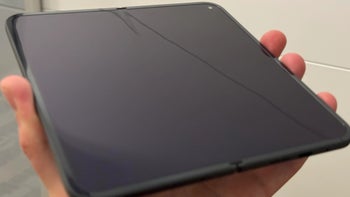Huawei is no longer keeping quiet about the Kirin chips powering its high-end phones
We may earn a commission if you make a purchase from the links on this page.

Last August Huawei electrified the smartphone world by unveiling what was then its latest flagship smartphone, the Mate 60 Pro. The phone itself, while an outstanding device with many high-end features, wasn't the shocker. It was the application processor (AP) powering the device that was the surprise. The Kirin 9000s AP under the hood was the first 5G chipset inside a Huawei phone since 2020's Mate 40 series. In 2020, the U.S. changed its export rules to prevent foundries using American tech from shipping 5G chips to Huawei.
Huawei got around the sanction by having China's largest foundry, SMIC, build the chip using a two-generation old process node (7nm). Previous flagship series like the P50, Mate 50, and P60 used Qualcomm Snapdragon chips that the U.S. Commerce Department allowed to be shipped to Huawei. These chips were tweaked so that they could not work with 5G networks. But Huawei, once TSMC's second-largest customer after Apple, is once again making its own chips even if they are not made with cutting-edge technology.
The Chinese manufacturer has been keeping its mouth silent about the chips it has used since the Mate 60 series. Earlier this year it released the Pura 70 series, a new name for its photography-based "P-series" flagship models. Later this year, it will announce the Mate 70 series and there has been speculation that SMIC has somehow been able to create 5nm chipsets even without owning an extreme ultraviolet lithography (EUV) machine.

The Mate 60 Pro was Huawei's first 5G phone in three years when it was released last year. | Image credit-Huawei
Most experts agree that an EUV is needed to etch the extremely thin circuitry patterns on a silicon wafer required to place billions of transistors inside a chip. Only one company in the world makes EUV machines and that firm, ASML, is not allowed by the Dutch and American governments to ship them to SMIC.
As we said, Huwaei has kept quiet about its plans. However, Weibo tipster "Adak is a wolf" has posted on the Chinese social media site that members of the manufacturer's first-line sales team can now reveal details about the chips that run specific models. That led China's ITHome to visit a Huawei store where it asked a member of the sales staff about the APs powering certain recent Huawei releases. They were told that, as expected, the 7nm Kirin 9000s is found inside the Mate 60 line, and the same chipset is used on the Mate X5 book-style foldable.

Huawei salesmen can now talk about chips powering Huawei phones. | Image credit-Weibo
As for the most recent Huawei flagship release, the Pura 70 series is equipped with the Kirin 9000s except for the Pura 70 Pro and Pura 70 Ultra which feature the Kirin 9010 AP. This chipset is produced using SMIC's 7nm N+2 process node. As for the upcoming Mate 70 line, it will be interesting to see whether SMIC, the third-largest foundry in the world, can deliver a 5nm chip using the deep ultraviolet lithography (DUV) machines that it owns.
The Mate 70 line will be released during the fourth quarter of this year; the latest rumors call for it to sport an upgraded Kirin chipset with the ability to run AI features and support satellite communications. The series will have HarmonyOS Next pre-installed. A benchmark test revealed that the Kirin 9010 is as much as 30% slower than 2022's Snapdraogn 8+ Gen 1.




![iPhone users on AT&T left without service after massive outage [UPDATED]](https://m-cdn.phonearena.com/images/article/161893-wide-two_350/iPhone-users-on-AT-T-left-without-service-after-massive-outage-UPDATED.jpg)








Things that are NOT allowed: